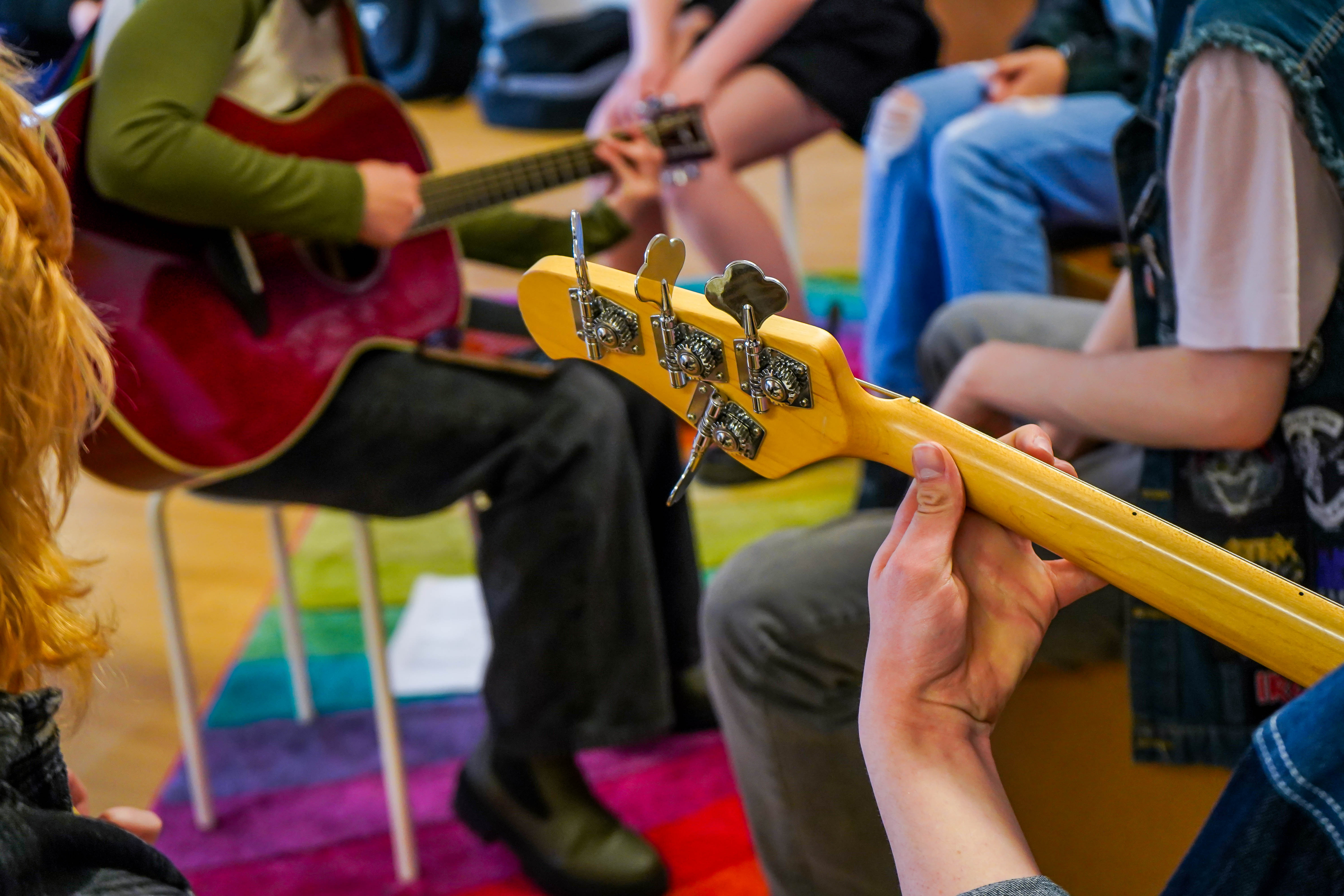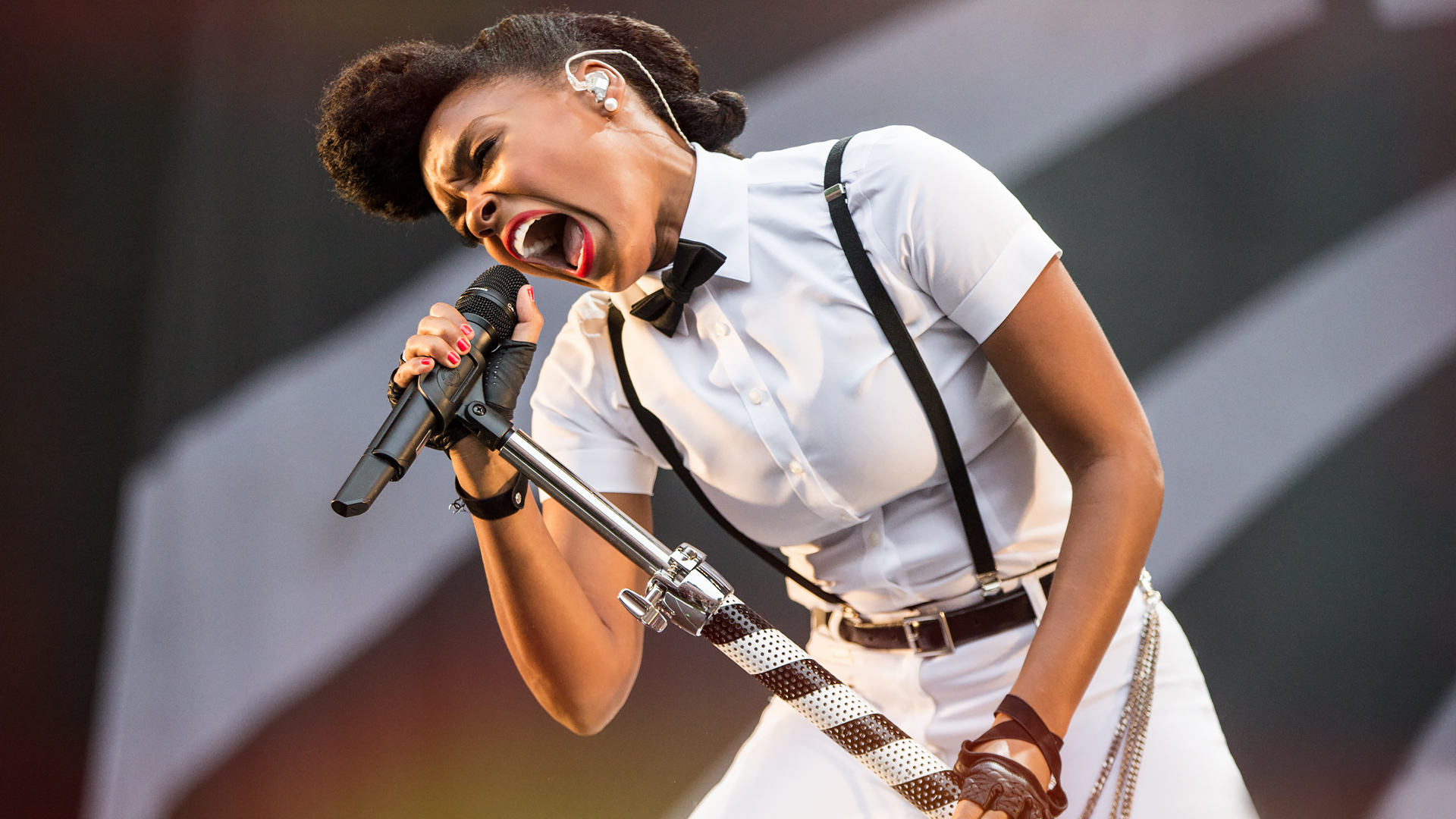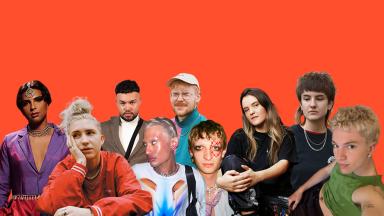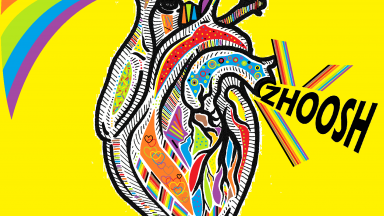Written by David Simkins | @davidsimkinsmusic
Youth Music NextGen writer, David Simkins, examines the importance of queer representation and identification in music for young people.

From the moment LGBTQIA+ youth begin to discover our identity, we also learn to silence it.
60% of LGBTQIA+ 13-24-year-olds experience discrimination due to our sexual orientation or gender identity. To protect ourselves from hate and rejection, many of us choose to hide our true selves.
Repression leads to isolation. Only half of LGBTQIA+ youth feel that their sexual orientation or gender identity is affirmed at school, while barely a third feel supported at home.
Culturally alone within our immediate friends and family, we experience a feeling of involuntary yet increasingly compelling self-reliance: “I’ll have to figure this out for myself.”
With the support of music, many of us begin to break our silence, completing a personal journey from self-discovery to self-expression and self-acceptance.
This is both a personal, introspective journey unique to every individual and a unifying, collective experience intrinsic to LGBTQIA+ youth culture.
But how does the music we listen to affect our self-discovery? And in turn, how does our self-discovery impact our listening choices?
How music enables freedom
Music allows LGBTQIA+ youth to escape from the exclusivity of our immediate reality by participating in LGBTQIA+ culture on our own terms, at our own pace and without the pressure or risk of disclosing our identity to others.
While remaining safely in the closet, music enables LGBTQIA+ youth to explore the feelings that we don’t know how to put into words. Some even describe curating a soundtrack to help them unravel their identity.
At a time when we feel the least understood, by ourselves, let alone everyone else, music has the power to make us feel seen.
From unrequited love songs (Lil Nas X’s ‘Call Me By Your Name’) and angsty lyrics (Queen’s ‘I Want to Break Free’) to sex-positive celebrations (The Weather Girls’ ‘It’s Raining Men’) and music which inspires self-confidence (Lady Gaga and Ariana Grande’s ‘Rain On Me’); any song can be part of someone's coming out soundtrack if it speaks to their personal journey.
For LGBTQIA+ youth, listening to music creates a feeling of safety, an experience of freedom.
It enables us to express emotions we felt like we couldn’t or shouldn’t, by using someone else’s words instead of our own.
Music empowers us to imagine living our lives authentically. It provides a source of courage for us not only to accept who we are but also to find pride and joy in our identity and culture.
Music and LGBTQIA+ representation
Music doesn’t have to be written by an LGBTQIA+ artist to resonate with LGBTQIA+ youth.
Take last year’s viral hit and recent Grammy award winner, ‘Padam Padam’ (Kylie Minogue), or ‘Same Love’ (Macklemore & Ryan Lewis), which became the first U.S. Top 40 song to promote same-sex marriage in 2012.
However, coming out can prompt LGBTQIA+ youth to seek music written specifically by LGBTQIA+ artists, including Hayley Kiyoko, Troye Sivan, and SOPHIE. As listeners, this is a behavioural shift from LGBTQIA+ youth passively enjoying music to actively searching for music that makes us feel represented.
LGBTQIA+ youth choose to discover music written by LGBTQIA+ artists because it reduces feelings of isolation and creates a connection to a role model. LGBTQIA+ music is testimony to LGBTQIA+ youth that we are not alone in our journey; it normalises our identities and experiences.
Representation creates validation: 79% of LGBTQIA+ youth find that musicians coming out as LGBTQIA+ positively impacts self-acceptance.
LGBTQIA+ role models in music
Thanks to the accessibility of information on the internet and the proliferation of music on streaming services, let alone the extraordinary courage of musicians in the LGBTQIA+ community, it is easier than ever for LGBTQIA+ youth to discover music from artists who have publicly come out.
It’s striking too how much more explicit LGBTQIA+ music has become - take Lil Nas X’s ‘MONTERO (Call Me By Your Name)’ for starters.
But most importantly, marginalised LGBTQIA+ youth are increasingly able to find representation in diverse, intersectional role models.

For example, non-binary, bisexual, and pansexual Black American artist Janelle Monáe, whose latest record The Age of Pleasure was nominated for the Best Progressive R&B Album at this year’s Grammy Awards. Also, German pop and EDM artist Kim Petras, whose 2023 collaboration with Sam Smith, ‘Unholy’, made her the first openly transgender solo artist to reach no.1 in the U.S.
Why we need more LGBTQIA+ representation
Although songs about the LGBTQIA+ experience now define many artist careers and attract unprecedented audiences, global progress on LGBTQIA+ rights varies significantly between countries.
Anti-trans legislation is growing across the United States, while in November 2023, the Russian Supreme Court outlawed the international LGBTQIA+ movement as ‘extremist’. In seven countries, homosexuality still carries the death penalty.
The progress that’s been made is indispensable, but we still have a long way to go.
Increased representation and advocacy will be essential for improving the legal rights and mental health of LGBTQIA+ youth worldwide.
And given the importance of music for LGBTQIA+ youth, musicians (who feel safe and brave enough to do so) have not just the opportunity, but the responsibility to be role models at the forefront of international LGBTQIA+ liberation.
Read next...
Pride Month: Inside Glasgow's Vibrant Queer Club Scene
Youth Music NextGen writer Tiarna Meehan explores the importance of queer music spaces for the LGBTQ+ community in Glasgow.
9 LGBTQ+ NextGen Artists On the Rise
This Pride Month 2023, discover nine LGBTQ+ Youth Music NextGen artists making music across a plethora of genres.
6 grassroots organisations supporting LGBTQ+ young people through music
This LGBT+ History Month, take a look at some of the organisations we invest in that support LGBTQIA+ young people all year round.


